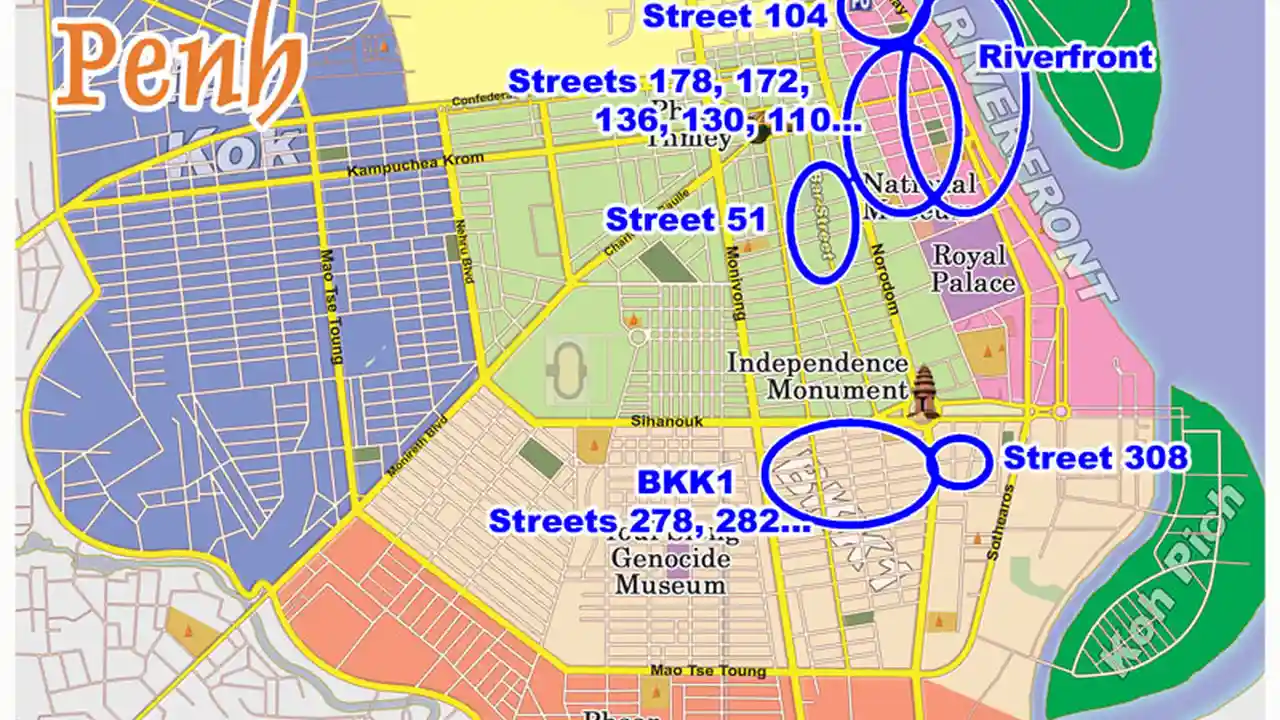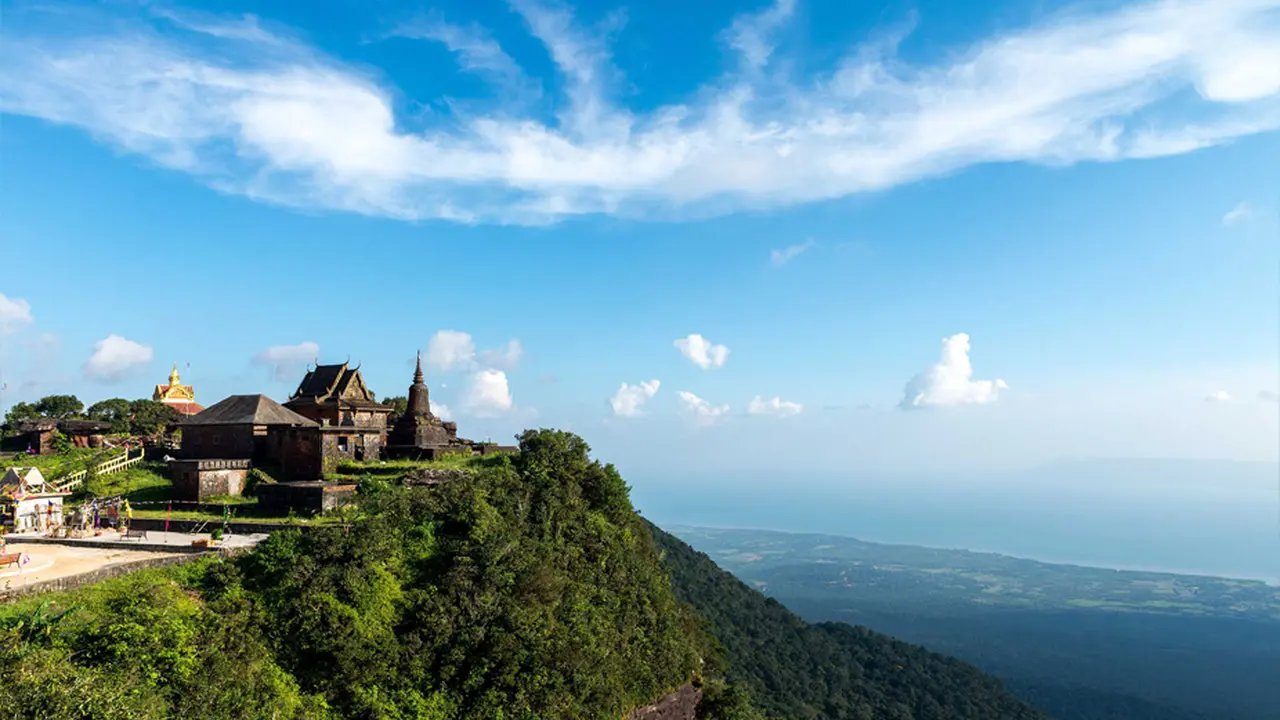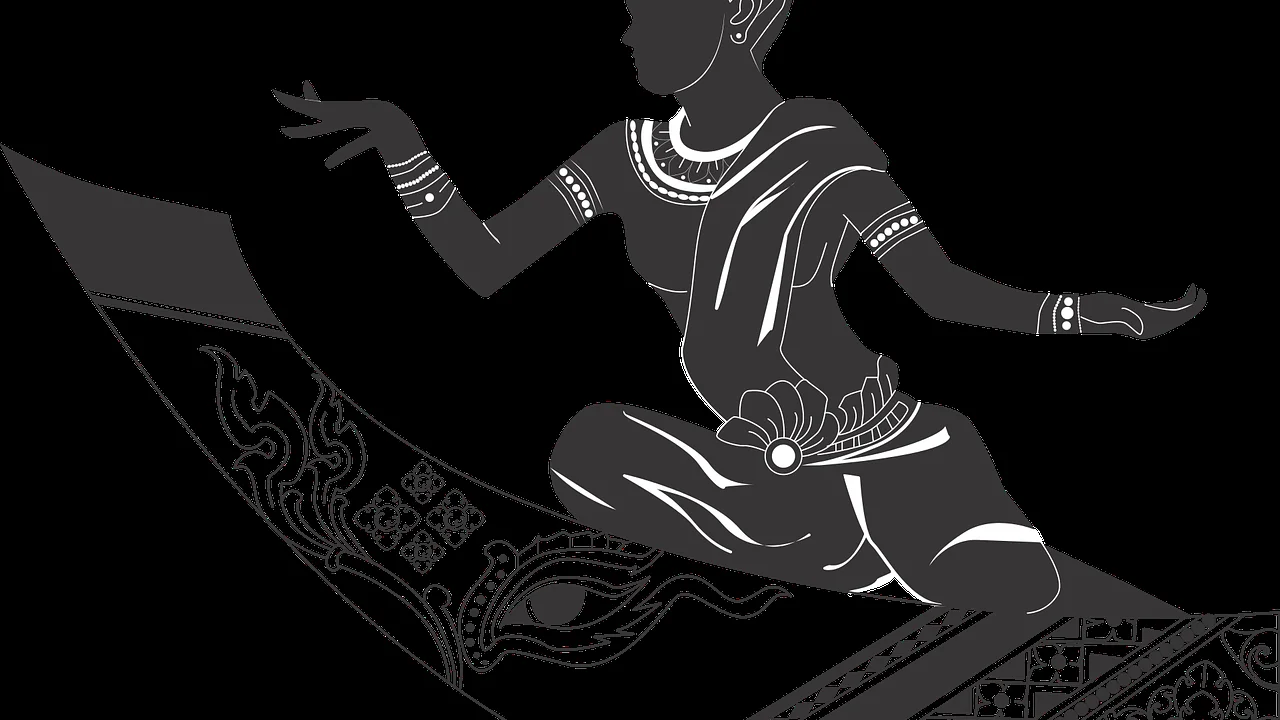Phnom Penh Street Food: A US Tourist's Guide to Local Flavors

Introduction: Diving into Phnom Penh's Culinary Heart - Street Food Scene
Alright, folks, buckle up! You're in Phnom Penh, Cambodia's vibrant capital, and you're about to embark on a culinary adventure unlike any other. Forget fancy restaurants for a minute; we're talking about street food – the real soul of Cambodian cuisine. This isn't just about eating; it's about experiencing the city, meeting the locals, and getting a taste (literally!) of Cambodian culture. As a US tourist, diving into a new street food scene can be a little daunting, but trust me, it's worth it. This guide is your passport to navigating the delicious (and sometimes slightly chaotic) world of Phnom Penh street food.
Navigating the Streets: Finding the Best Street Food Spots in Phnom Penh - Location, Location, Location
So, where do you even begin? Phnom Penh's street food scene is scattered throughout the city, but there are a few key areas that are absolute must-visits. First up is the Riverside area (Sisowath Quay). This is a popular spot for tourists and locals alike, with vendors lining the streets offering everything from grilled meats to fresh fruit shakes. It’s a great place to start, especially in the evening when the atmosphere is buzzing. Another excellent option is the Central Market (Phsar Thmey). While the market itself is a treasure trove of goods, the surrounding streets are packed with food stalls serving up local favorites. For a more authentic experience, head to Orussey Market (Phsar Orussey). This bustling market is less touristy and offers a glimpse into the daily lives of Phnom Penh residents. Be prepared for crowds and a bit of organized chaos, but the food is incredible and the prices are unbeatable.
Must-Try Dishes: A Culinary Journey Through Phnom Penh's Signature Street Foods - Taste Sensations Await
Okay, let's get to the good stuff – the food! Here are some must-try dishes that will tantalize your taste buds:
- Nom Banh Chok (Khmer Noodles): This is a Cambodian staple and a perfect breakfast or lunch option. It consists of rice noodles topped with a flavorful fish-based gravy, fresh vegetables, and herbs. Each vendor has their own unique twist, so don't be afraid to try it from multiple stalls.
- Bai Sach Chrouk (Grilled Pork and Rice): Simple, yet incredibly satisfying. Thinly sliced pork is marinated in garlic and soy sauce, then grilled to perfection and served over rice with pickled vegetables. It's a quick and easy meal that's perfect for a quick bite.
- Lok Lak (Stir-Fried Beef): Tender pieces of beef are stir-fried with vegetables and a savory sauce, usually served with rice or French fries. It's a flavorful and filling dish that's a favorite among locals and tourists alike.
- Amok Trey (Fish Amok): While often found in restaurants, you can sometimes find street vendors selling smaller portions of this creamy coconut curry fish dish, steamed in banana leaves. It's a delicate and aromatic dish that showcases the best of Khmer flavors.
- Kuy Teav (Noodle Soup): A popular breakfast soup featuring pork or beef broth, rice noodles, and various toppings like bean sprouts, herbs, and fried garlic. It's a comforting and flavorful way to start your day.
- Balut (Fertilized Duck Egg): Okay, this one isn't for the faint of heart! Balut is a fertilized duck egg that's been incubated for a few weeks before being boiled and eaten. It's a popular snack in Southeast Asia and is said to be packed with nutrients. If you're feeling adventurous, give it a try!
- Num Pang (Cambodian Sandwich): A baguette filled with various meats, pickled vegetables, pate, and chili sauce. It's a delicious and affordable lunch option that's similar to a Vietnamese banh mi.
Product Recommendations: Elevating Your Street Food Experience with Essential Gear - Tools of the Trade
To truly enjoy your Phnom Penh street food adventure, consider bringing along a few essential items:
- Hand Sanitizer: This is a must-have for any street food excursion. You'll be touching surfaces and handling food, so keeping your hands clean is essential. A small bottle of hand sanitizer is easy to carry and will help prevent any unwanted stomach issues. Consider the Purell Advanced Hand Sanitizer (around $3 for a small bottle) for its effectiveness and portability. Alternatively, Germ-X Original Hand Sanitizer (also around $3) is a classic choice. Purell is known for its quick-drying formula, while Germ-X is slightly more moisturizing. Use before and after eating.
- Wet Wipes: Similar to hand sanitizer, wet wipes are great for cleaning your hands and face after eating. They're also useful for wiping down tables or utensils if you're feeling extra cautious. Kirkland Signature Wet Wipes (bulk pack around $20) are a good value if you plan on using them frequently. For individual packets, consider Wet Ones Antibacterial Hand Wipes (travel pack around $3). Kirkland wipes are larger and more durable, while Wet Ones are more convenient for carrying in your pocket.
- Small Backpack: A small backpack is perfect for carrying your essentials, such as water, sunscreen, hand sanitizer, and a small first-aid kit. It also allows you to keep your hands free while navigating the crowded streets. The Osprey Daylite (around $50) is a popular choice for its lightweight design and comfortable fit. A more affordable option is the Venture Pal Lightweight Packable Backpack (around $20). The Osprey is more durable and has better organization, while the Venture Pal is more compact and budget-friendly. Use it to store water, snacks, and your valuables.
- Reusable Water Bottle: Staying hydrated is crucial, especially in the hot and humid climate of Phnom Penh. Bring a reusable water bottle and refill it whenever possible. The Hydro Flask (around $35) is a popular choice for its insulation and durability. A cheaper alternative is the Nalgene Tritan (around $15). Hydro Flask keeps drinks cold for longer, while Nalgene is more lightweight and easier to clean. Fill it with filtered water from your hotel or a reputable source.
- Small First-Aid Kit: It's always a good idea to have a small first-aid kit on hand, just in case. Include essentials like bandages, antiseptic wipes, pain relievers, and diarrhea medication. The Adventure Medical Kits Ultralight Watertight .7 Medical Kit (around $25) is a compact and comprehensive option. You can also assemble your own kit using a small pouch and individual items. Include antiseptic wipes, bandages, and pain relievers.
- Immodium/Loperamide: Let's be real, sometimes your stomach might not agree with everything. Having some Immodium or Loperamide on hand can be a lifesaver. Consult your doctor before traveling to see if this is right for you. You can generally find a pack of 12 for around $5 at most pharmacies.
Understanding Prices and Payment: Navigating the Cambodian Currency and Haggling Culture - Money Matters
The Cambodian currency is the Riel (KHR), but US dollars are widely accepted. It's a good idea to have a mix of both on hand, especially smaller denominations. When paying for street food, prices are usually very reasonable. A typical meal might cost anywhere from $1 to $5. Haggling is generally not expected at street food stalls, but it's always worth a try if you're buying multiple items. Just be polite and respectful, and don't try to bargain too aggressively.
Dietary Considerations: Addressing Common Allergies and Restrictions - Eating Smart
If you have any dietary restrictions or allergies, it's important to be mindful when eating street food. Many dishes contain fish sauce, soy sauce, peanuts, and other common allergens. Be sure to ask the vendor about the ingredients before ordering. Learning a few basic phrases in Khmer, such as "I am allergic to peanuts" (Khnyom alerk ning sdao), can be helpful. Vegetarian options are available, but be sure to confirm that they don't contain any hidden meat or fish products. Look for dishes like vegetable stir-fries or tofu-based meals.
Staying Safe and Healthy: Tips for Avoiding Food Poisoning and Other Ailments - Safety First
While street food is generally safe, there are a few precautions you can take to minimize the risk of getting sick:
- Choose vendors that look clean and busy: A busy stall is usually a good sign that the food is fresh and popular.
- Make sure the food is cooked thoroughly: Avoid eating raw or undercooked meat.
- Drink bottled or filtered water: Avoid drinking tap water or ice made from tap water.
- Wash your hands frequently: Use hand sanitizer or soap and water whenever possible.
- Trust your gut: If something doesn't look or smell right, don't eat it.
Language Barrier: Communicating with Vendors and Ordering Food - Speak Up
While English is spoken in some tourist areas, it's helpful to learn a few basic Khmer phrases. Here are a few to get you started:
- Hello: Sus-dei
- Thank you: Or-kun
- How much?: Tlai ponman?
- Delicious: Ch'nganh
- No spicy: Min hal
Don't be afraid to point and gesture if you're having trouble communicating. Most vendors are friendly and willing to help.
Ethical Considerations: Supporting Local Businesses and Respecting the Culture - Be a Responsible Tourist
When eating street food, you're not just filling your stomach; you're also supporting local businesses and contributing to the local economy. Be mindful of your impact and try to be a responsible tourist. Avoid littering, be respectful of the local culture, and try to learn a few basic Khmer phrases. By being a considerate traveler, you can help ensure that street food remains a vibrant and sustainable part of Phnom Penh's culture.
Specific Product Recommendations with Usage Scenarios, Comparisons and Prices
Water Filters and Purifiers: Ensuring Safe Drinking Water
While bottled water is readily available, a portable water filter or purifier can be a more sustainable and cost-effective option. These are especially useful if you're planning on traveling outside of major cities where bottled water may not be as easily accessible.
- Sawyer Squeeze Water Filter: This lightweight and compact filter can be attached to a water bottle or used to filter water directly into your mouth. It removes 99.99999% of bacteria and protozoa. Usage Scenario: Hiking, camping, or traveling in areas with questionable water quality. Price: Around $30.
- LifeStraw Personal Water Filter: Similar to the Sawyer Squeeze, the LifeStraw is a lightweight and portable filter that removes bacteria and protozoa. Usage Scenario: Emergency situations, backpacking, or traveling in developing countries. Price: Around $20.
- GRAYL Geopress Water Purifier: This purifier removes viruses, bacteria, protozoa, and heavy metals. It's a bit bulkier than the Sawyer Squeeze or LifeStraw, but it provides a higher level of protection. Usage Scenario: Traveling in areas with high levels of water contamination. Price: Around $90.
Comparison: The Sawyer Squeeze and LifeStraw are both great options for removing bacteria and protozoa, but the GRAYL Geopress provides a higher level of protection by also removing viruses and heavy metals. The GRAYL is also more expensive and bulkier.
Portable Power Banks: Staying Connected on the Go
With all the photos and videos you'll be taking, you'll want to make sure your phone stays charged. A portable power bank is a must-have for any traveler.
- Anker PowerCore 10000: This compact and lightweight power bank can charge your phone multiple times. Usage Scenario: Everyday use, travel, or emergencies. Price: Around $25.
- Mophie Powerstation PD: This power bank supports fast charging and can charge your phone quickly. Usage Scenario: When you need to charge your phone quickly. Price: Around $50.
- Goal Zero Venture 30: This rugged and waterproof power bank is perfect for outdoor adventures. Usage Scenario: Hiking, camping, or traveling in harsh conditions. Price: Around $80.
Comparison: The Anker PowerCore 10000 is a great all-around power bank for everyday use. The Mophie Powerstation PD is a good option if you need fast charging. The Goal Zero Venture 30 is the best choice for outdoor adventures.
Conclusion... just kidding! Keep Exploring!
So there you have it – your ultimate guide to Phnom Penh street food. Get out there, explore, and eat your heart out! Don't be afraid to try new things, talk to the locals, and embrace the chaos. You're in for a culinary adventure you'll never forget. Happy eating!
:max_bytes(150000):strip_icc()/277019-baked-pork-chops-with-cream-of-mushroom-soup-DDMFS-beauty-4x3-BG-7505-5762b731cf30447d9cbbbbbf387beafa.jpg)






